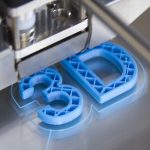
3D rendering is a miracle of modern technology, capable of everything from creating lavish gaming experiences to simulating real-world environments for businesses. Unfortunately, your setup might suffer from lag, or delays that make it aggravating to render anything—but there are some simple changes that can improve your performance.
Why Is 3D Rendering So Resource-Intensive?
Regardless of your application, 3D rendering is incredibly resource-intensive. This is partially because 3D rendering demands multiple components operating in unison, including your graphics cards, your RAM, your hard drive, and of course, the software you’re using. If even one of these components is off, your rendering speed could be negatively affected.
The problem is complicated by the fact that 3D rendering contains so much depth. Intuitively, you know that 3D rendering is more resource-intensive than 2D rendering because it multiplies your graphical needs by another factor. It also typically means you’re forced to render dense items, like textures, from scratch.
Want More Tech News? Subscribe to ComputingEdge Newsletter Today!
How to Decrease Rendering Times
So what steps can you take to decrease your rendering times?
- Upgrade your RAM. First, consider upgrading your RAM. Your PC’s random access memory is a fast type of memory that serves to temporarily store information your software needs in the moment and in the near future. Think of it as a holding cell or decompression chamber for your software’s information. If your RAM doesn’t have sufficient capacity, or if it has slowed over the years, you won’t be able to render things at high speed. Fortunately, swapping out your RAM is a relatively simple operation.
- Invest in better software. It could also be that the program you’re running is the root of the problem. Not all 3D rendering or design software is created equal; some have natural inefficiencies that lead them to render things slowly. Experiment with different apps to see if they all have the same delays; if they do, it means the problem lies with your machine.
- Tinker with your rendering settings. Your 3D rendering program likely comes with a ton of custom settings—most of which you’ve never touched. Sometimes, adjusting a few of these settings is all you need to speed up the rendering process. For example, you might reduce pre-comps, which require your pixel information to pass through many compositions before rendering to your hard drive. You can also trim certain layers, or use a different codec to make things smoother.
- Buy a better graphics card. Most 3D rendering programs heavily rely on your graphics processing units GPUs to form the user interface. If yours are insufficient, or if they’re aging, it may be time for an upgrade. Just like with RAM, this is a relatively simple swap that even someone without technical experience should be able to handle.
- Rely on a solid-state drive. There are two main type of hard drives—the previously standard hard disk drive (HDD) and solid state drive (SSD). SSDs are superior in most ways, allowing faster access times, offering greater reliability, and even using less power. The only downside is that they tend to be more expensive. If you want your machine to 3D render as quickly as possible, it’s definitely worth the upgrade.
- Close any other programs. This is a simple step, but it’s an important one that many designers miss: close out any other programs you have open. Each program open on your computer is occupying at least some computer resources, which all take away from your 3D rendering potential. While you’re at it, consider giving your machine a full shutdown and restart.
- Be selective with your effects. Part of the magic of 3D design and rendering is getting to add custom effects, which might add superior textures or make your design more realistic. However, if you’re trying to optimize for speed, these effects can hog your computer’s resources and bog things down. Be selective about which effects you apply, and consider the time cost as well as the visual advantages.
If you’re still having issues with your 3D rendering, it could mean there’s a problem with your software or files; ask other people running the same program on different machines if they’re experiencing the same issues. If not, it could mean your entire computer is due for an upgrade. It’s not a cheap solution, but it may be a necessary one if you want to reduce your 3D rendering times.